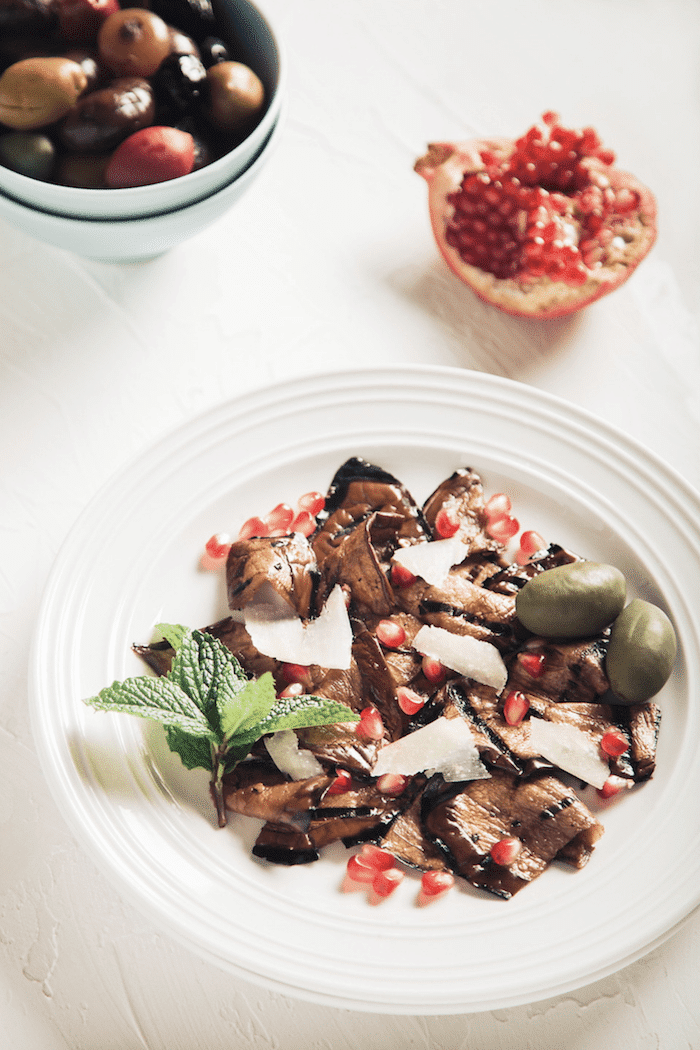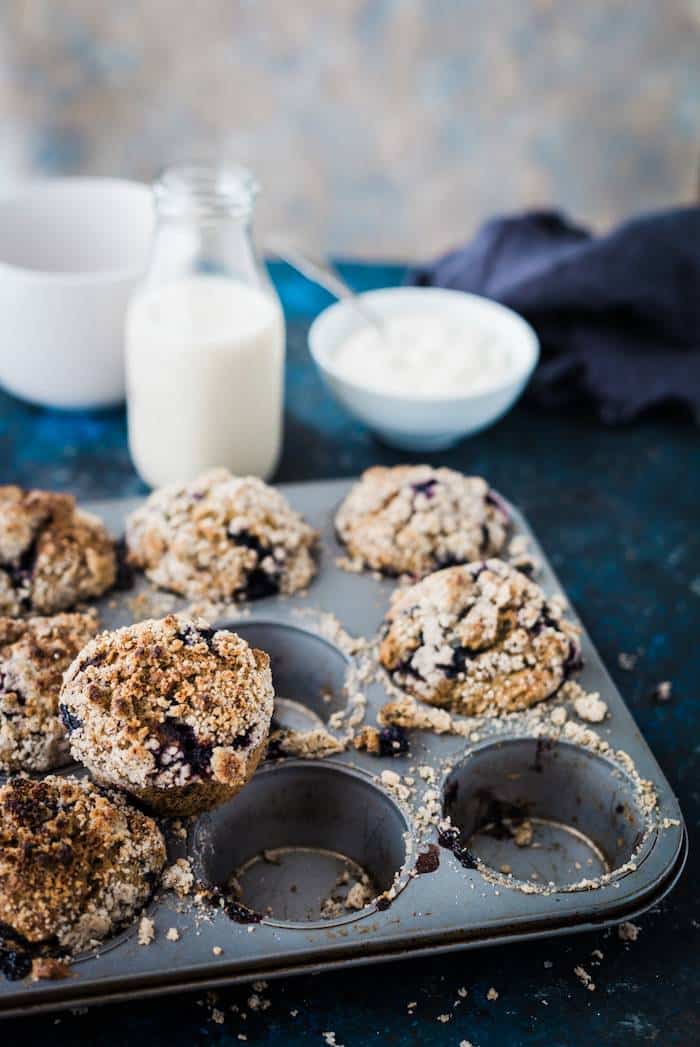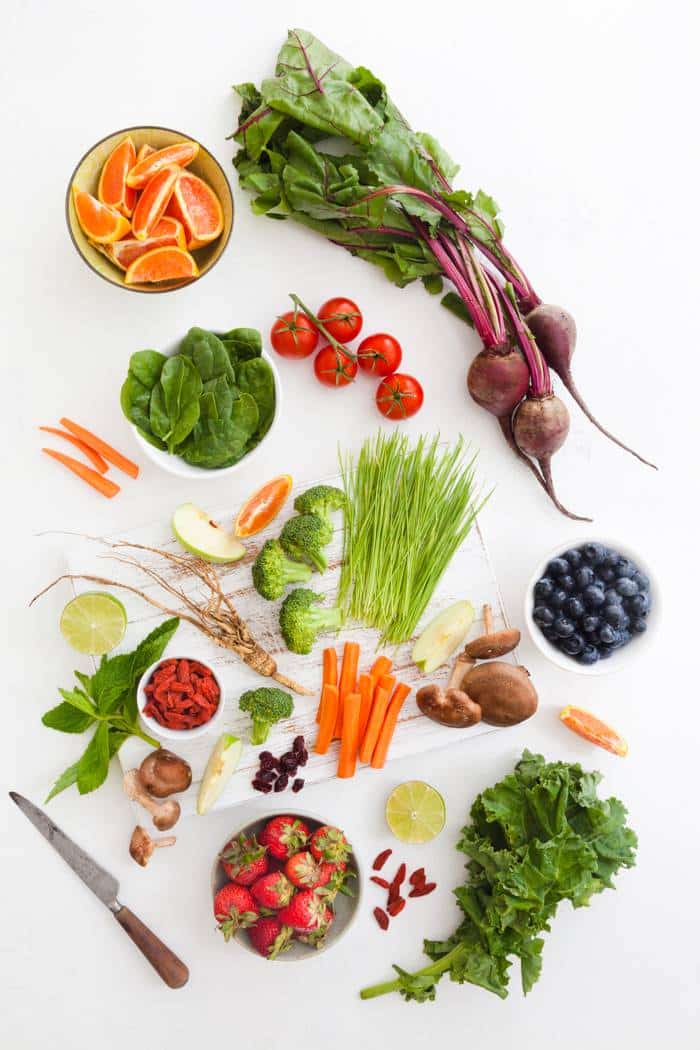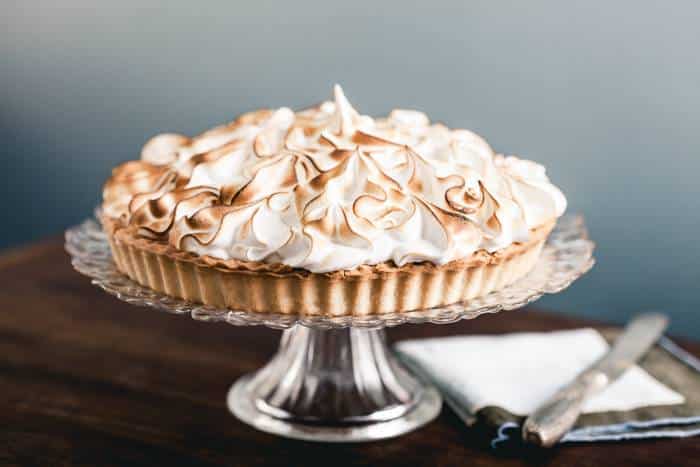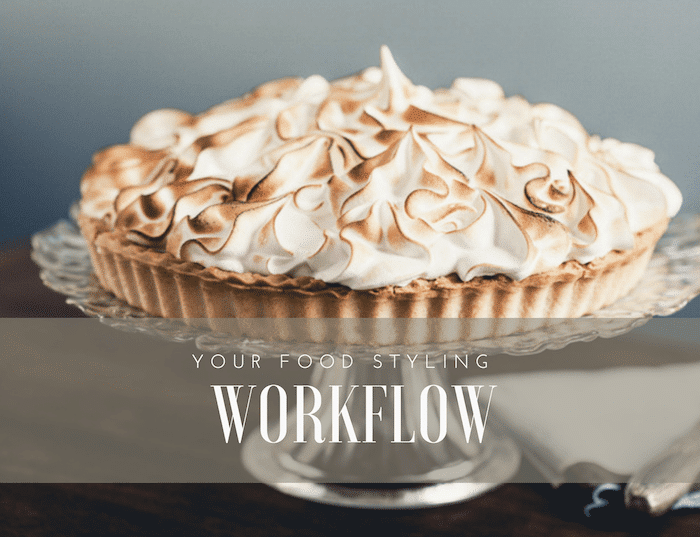
When you first start out as a food photographer, you need to learn to style food out of necessity to build your portfolio, which will in turn help you start getting work. Once you are a pro and working on sets with a food stylist, you will still need to have some competency in this area, as food photography is a collaborative process and you are ultimately responsible for the composition.
So here are my top tips to approach styling food. These are not specific tips such as brush olive oil on your meat to make it glisten type of tips, more like some strategies to approach food styling in terms of a workflow:
Less is more
The first thing I learned about food styling is less is more. I shot the marinated eggplant pictured below when I was building my portfolio (don’t ask me why I chose a slimy, soggy brown vegetable as an interesting subject). I began by layering slices on the plate. I thought a kaleidoscope of layers would look interesting but after laying a few slices of eggplant down, it became quite clear that it wasn’t going to work. Brown food isn’t the most photogenic in the first place, and large heavy clumps of it, no matter how well arranged, are not pleasing to the eye.
I ended up tearing the strips into more manageable bite-sized pieces and left enough white space on the plate so that when the other elements of the composition were added, the plate would still look balanced. Ultimately, a better shot than I should have hoped for with the added element of pomegranate.
The lesson here is when approaching the styling of a shot, think of how you will balance the various compositional elements within the space in the shot in order to create the flow for the eye making its way across the image. Often, you will find that you will need a lot less food on a plate than you are used to. You don’t want it to look like you’re coming back from the buffet table at Caesar’s Palace.
Except when more is more
When it comes to buying the actual ingredients, you will always need more than you think you will–a lot more than will show up in the picture. Food can look unappetizing very quickly and it can be a real challenge to manage all the elements in a composition to keep them constantly camera ready. This is why shooting one dish for an editorial may take an entire day. When I was taking a food photography class in photography school, we had three hours in studio to produce the one image we’d submit for our assignments; I often felt that I hadn’t had enough time to get the shot I wanted.
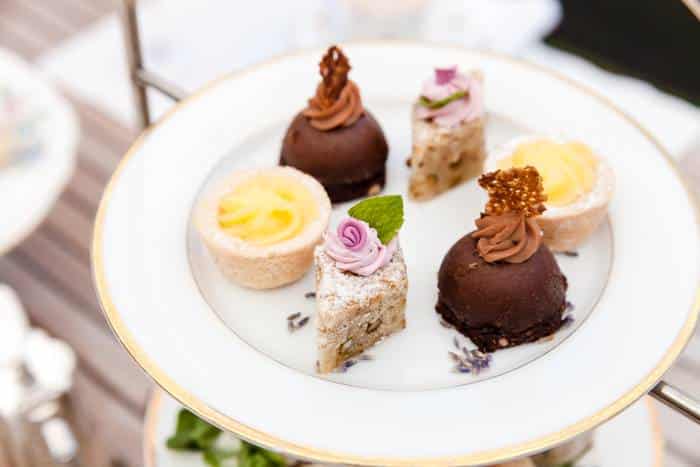
You need to “edit” the food, starting with a composition that looks good to you and see what happens once you take your shot. Editing the food means moving things around, adding elements or taking them away. Starting with a perfect looking plate and perhaps ending with a rustic looking dish with crumbs around it. Your set up may look a lot different to your lens than your eye, and you will have to make adjustments as you go along, ending up with a shot a lot different than you intended. Once you see all the frames in Lightroom or Photoshop, you may discover that your original shot was the one that you liked the best. Or it may be the last, or any one particular shot in between.
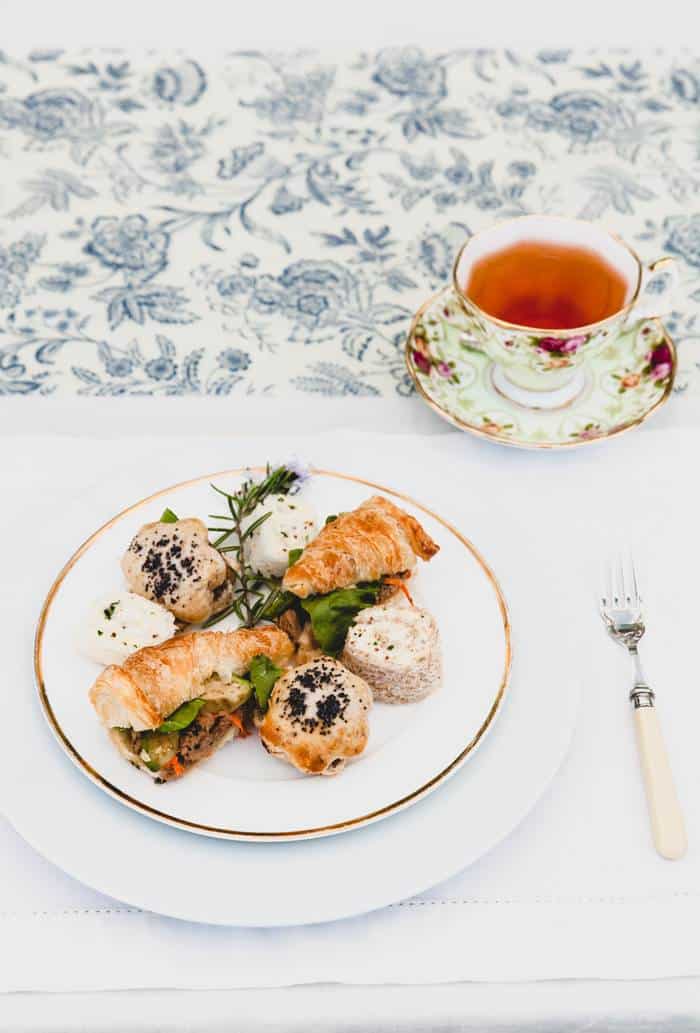
Replace elements as you go along
This is the single most important realization I made in learning about food styling. I used to cook the food, arrange it on a plate and click away until I felt I had my shot, or until the food started to look terrible. The thing is, you must be vigilant about noticing when the food is starting to die. It might not immediately look obvious to you, but it will be obvious to the camera. If you are styling your own photographs, you need to keep looking for the signs of food starting to move past its prime, especially in the case of garnishes like herbs. You must be ready to replace them quickly and continue with your shoot.
In the image below, shot for Subi Super Foods, it took me two hours to get the produce arranged for the camera. Once I got the orange slices the way I wanted them, the spinach would have wilted and I need to redo it.
The skin of a roasted chicken can wrinkle minutes after being taken out of the oven. Olives need constant moistening with water or their own juices to keep them from looking dry. Even items that have a longer life in front of the camera–like salamis and cured meats–will start to dry up when exposed to air and hot lights. Prosciutto that has began to curl at the edges will need to be replaced with more fresh prosciutto, leading to frequent interruption in the shoot and disruption to the set up of the food.
Find a food stylist to do test shoots with
When professional food photographers are thinking of taking on a new stylist, they usually do what is called a test shoot. Basically, this is where the photographer gives the food stylist images of her work in exchange for her food styling services. It is also a chance to see how they work together before taking on a paying gig. Food photography is all about collaboration and flow.
When I test a new stylist, we usually have a meeting to decide what we want to shoot, based on the gaps in our portfolios. The food stylist does the shopping and prep, but we split the cost of the ingredients. We may shoot at home or in a studio. I will give the stylist a set number of high resolution edited images so that she can use them on her website or print them for her book.
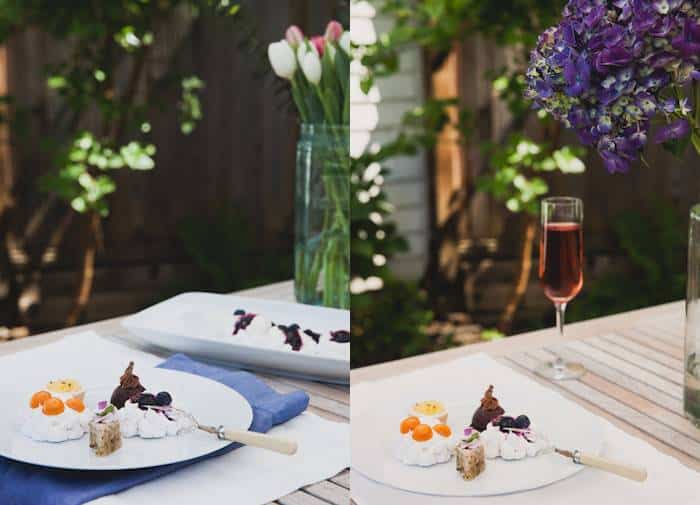

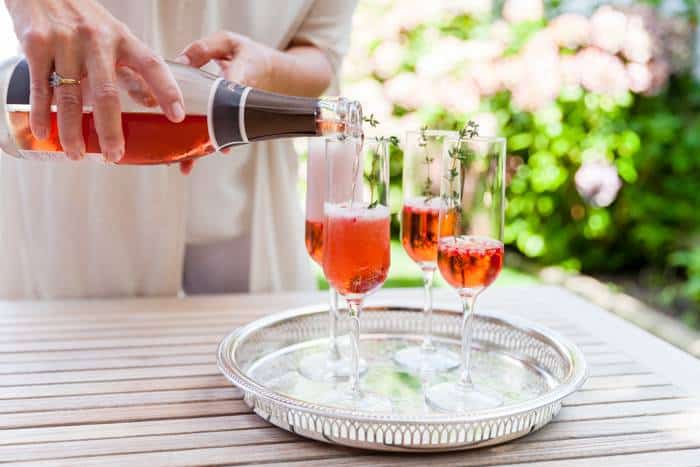
Be ready
Lastly, have all your equipment at the ready, your mise en place, even additional props you might use, preferably laid out on what will be used as your “production table”. And please … make sure you have really sharp knives.
Because timing is of utmost importance when getting your food in front of the camera, you need to be as organized as possible. I can’t emphasize this enough.
Since I sometimes still do some food styling for shots for my stock portfolio, I usually set up my camera and table before I start preparing the food, so everything is ready to go when the food is finished cooking.
When I was starting out there was not a lot of information available on food styling. It took me years of trial and error to arrive at some of these tips. If you want to learn more in-depth information about food styling, I recommend the new edition of The Food Stylist’s Handbook by Denise Vivaldo and Cindie Flannigan, which came out in 2017.
I would love your feedback to hear what has helped you to style better images.

